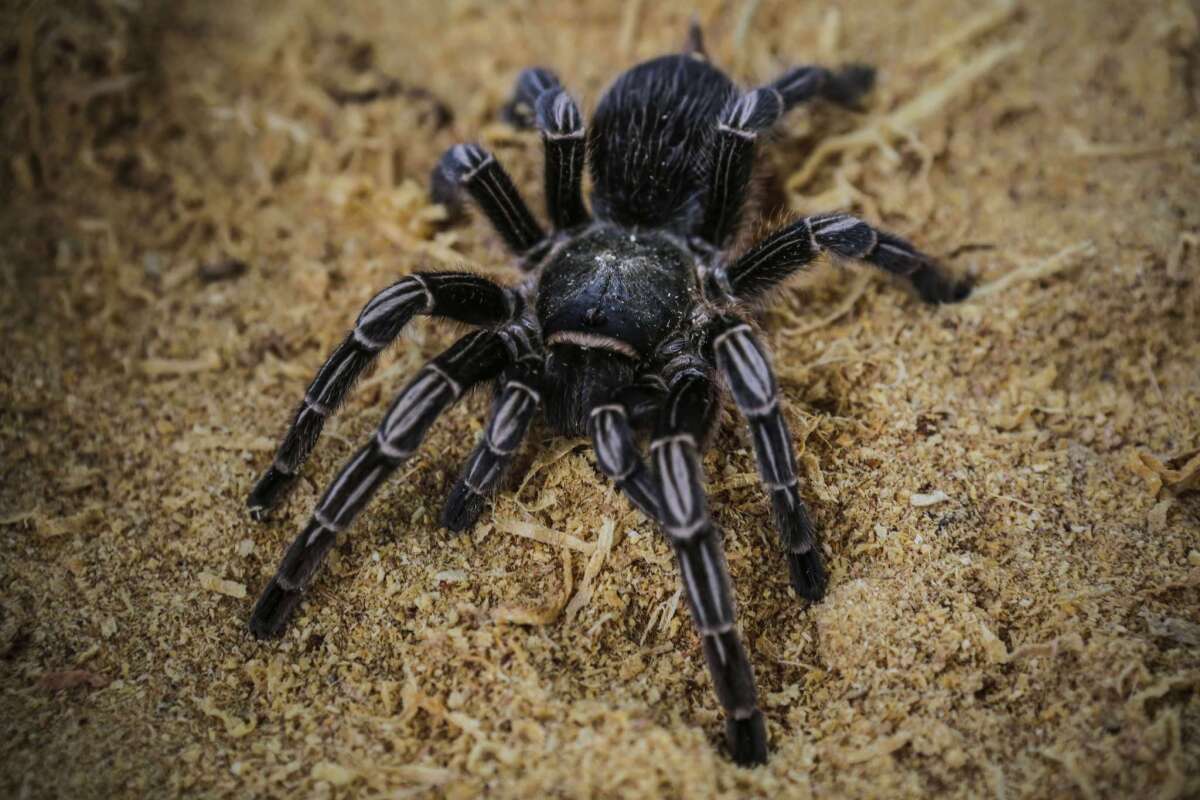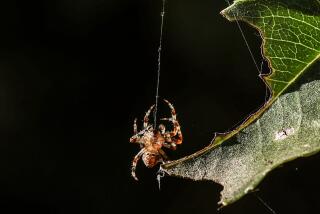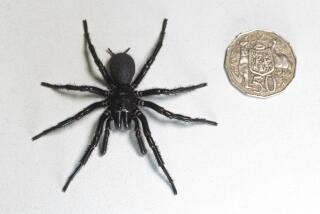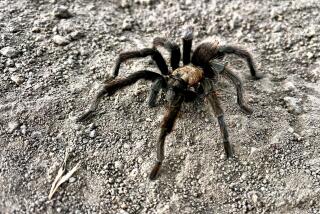Amazing spider leg inspires super-sensitive ‘hearing’ device

Talk about spidey senses! Inspired by slit-like organs in the wandering spider’s leg joints, scientists have built a super-sensitive device that can detect sounds and subtle mechanical vibrations.
This spider-like sensor, described in the journal Nature, could be used for a range of applications, from detecting dangerous amounts of strain on a structure to picking up speech patterns in a noisy room.
The wandering spider, known as Cupiennius salei, has hairy reddish legs and packs a nasty toxic venom. Females and males communicate in part using vibrations. For example, if a female rubs her mouth and abdomen against a banana leaf, amorous males must be able to sense the leaf’s subtle vibrations from several meters away in order to home in on this potential mate. Over time, the spiders have evolved an ingenious method of “hearing” each other: Crack-filled organs in their leg joints, known as ‘lyriform’ organs.
The spiders’ lyriform organs get their name from their shape: slits of different lengths arranged parallel to one another, rather like the strings in a lyre.
Scientists and engineers have come up with a host of different sensors made out of different materials, from carbon nanotubes to pressure-sensitive rubber, that are so flexible that they can even be applied to skin. But, the study authors wrote, developing “a multifunctional sensor satisfying the requirements of ultra-high mechanosensitivity, flexibility and durability remains a challenge.”
The Korean team led by researchers from Seoul National University thought the wandering spider’s strange crack-filled organs presented a possible solution to that challenge.
Lots of animals use ‘cracks’ to engineer their shells or skeletons, according to Peter Fratzl, managing director for the Max Planck Institute of Colloids and Interfaces in Germany, who was not involved in the paper. Think of these cracks as the mortar-filled gaps between the stones in a paved road. Those gaps give each hard stone a little bit of wiggle room, allowing the road to respond to stresses without buckling.
So when these materials get stretched or squished, it’s not the hard tiles getting deformed — it’s the cracks in the material that widen or narrow. This means that a tiny amount of stretching across the whole structure can mean a huge amount of stretching in the tiny crack.
It’s a phenomenon known as geometric amplification: The smaller the crack, the larger the crack’s deformation. If these gaps make up 1% of the material’s total length, for example, the amplification is a hundredfold, but if they make up just 0.1%, the effect is a thousandfold.
So the scientists created a tiny device with a thin 20-nanometer layer of platinum that was intentionally marred with cracks. They ran an electrical current across the device and used the changes in electric resistivity to measure how different vibrations caused the gaps to deform.
The device was able to sense both strain and mechanical vibration — and even sounds. The artificial lyriform organ could detect a ladybug’s wingbeats, measure post-running and resting heart rates, and even music (Edward Elgar’s “Salut d’Amour,” written in 1888). The scientists even put their flexible sensor on people’s necks to see if it could pick up speech patterns — and the accuracy of its simple word recognition was 97.5% even in noisy environments.
This spiderlike sensor is a remarkable biologically inspired device that could be useful for a host of applications, Fratzl said. But, he wrote in a commentary on the study, the device is nowhere near as sophisticated as the spider’s actual lyriform organ.
“We are still far away from an artificial sensory system with a performance similar to that of the spider organ, whose evolution going back to the origins of the Chelicerata group of arthropods has been 1,000 times longer than the existence of humans,” he wrote.
Follow @aminawrite for more creepy, crawly dispatches from the animal kingdom.







